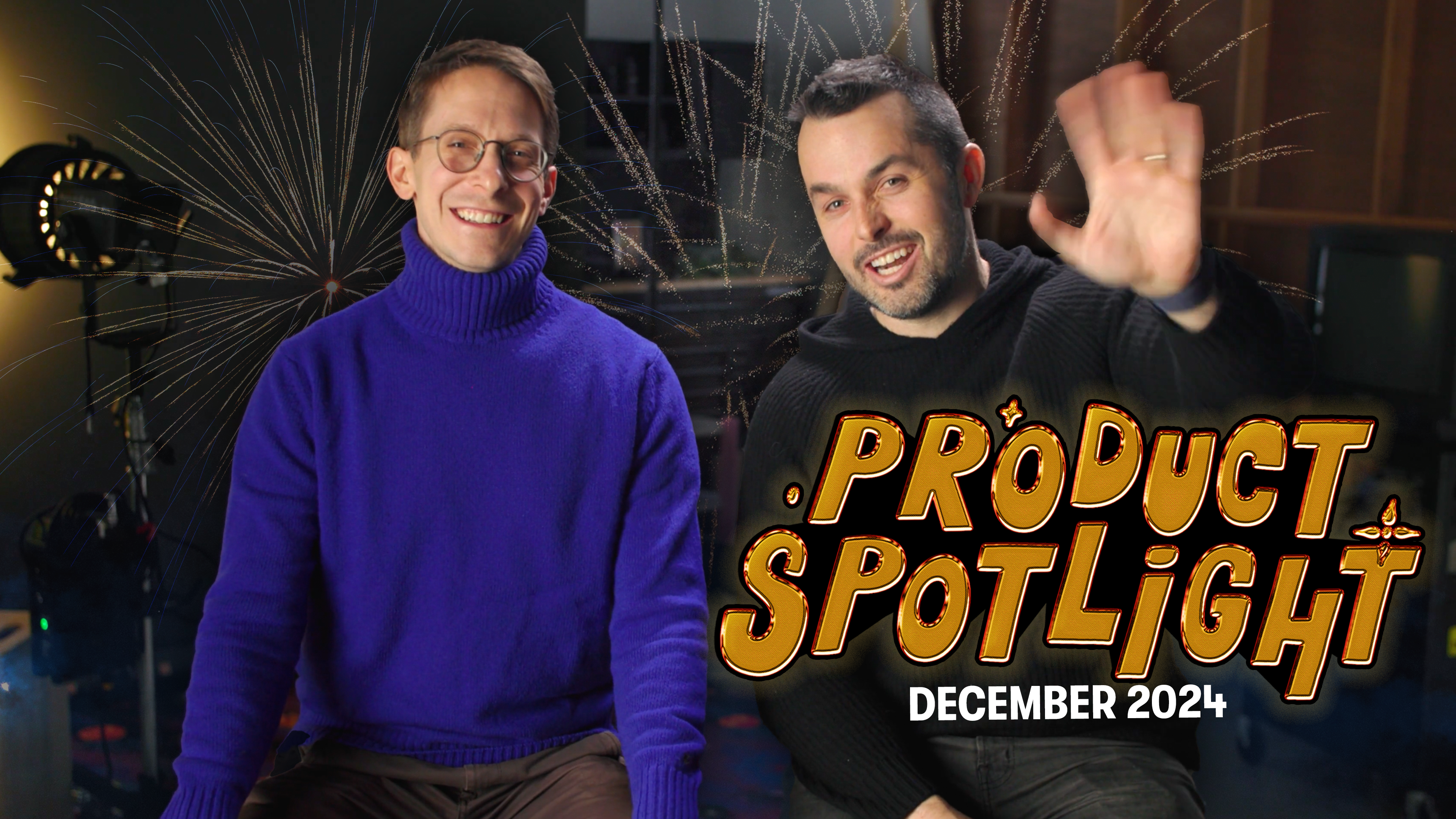How to Sell Leadership on Creating Audio Content for Your Brand
January 11, 2021
Topic tags
Meisha Bochicchio
Marketing
Ever since NPR’s Serial blasted podcasts into the mainstream in 2014, audio consumption has skyrocketed. In 2020, podcast listenership reached an all-time high: according to Edison Research’s Infinite Dial Study, an estimated 104 million people listen to podcasts every month, up from 90 million in 2019.
Brands have noticed the rising interest in audio content, and big names like GE, Slack, and even McDonald’s have launched their own podcasts in the past few years. These series often climb the podcast charts, helping the brands that produce them gain valuable name recognition and strengthen connections with their audiences.
But for many marketing teams, convincing leadership to take the leap and invest in audio content is still a challenge. To get buy-in from above, marketers need to show how branded podcasts drive engagement and build brand affinity without being cost-prohibitive.
If you’ve struggled with selling the value of audio content — we’re here to help. This post will provide some actionable insights for marketers to showcase the value of adding podcasting to their content strategy. Let’s get started!
Highlight how podcasts drive real engagement
Podcasts have a huge potential audience. An estimated 75% of Americans are familiar with podcasts, according to Edison Research’s study. They also have the most reach with younger audiences, a valuable market demographic: 7 in 10 millennials and Gen Zers listen to podcasts.
This is great news for brands because podcasts also have an exceptionally high engagement rate. The average podcast consumer spends over 6.5 hours listening to podcasts every week and listens to an average of six podcasts weekly.
“The average podcast consumer spends over 6.5 hours listening to podcasts every week and listens to an average of six podcasts weekly.”
And, unlike other forms of media, podcasts lend themselves well to multitasking; a study on branded podcasts by BBC Global News found that 94% of podcast listeners consumed podcasts while doing other tasks, which in turn made them 18% more engaged with the content than listeners who weren’t doing an activity.
Podcasts connect hard-to-reach listeners to your brand
Across the board, BBC Global News also found that branded podcasts were an incredible opportunity for brands to connect with their audience: They reach people at previously unreachable moments, such as when they’re doing the dishes or walking the dog. Plus, they’re incredibly effective at reaching “ad avoiders,” a valuable and hard-to-target segment.
“Podcasts reach people at previously unreachable moments and are incredible effective at reaching ‘ad avoiders’, a valuable and hard-to-target segment.”
Not only are branded podcast listeners more engaged and more receptive, but they also tune in regularly: When listeners find a show they like, they subscribe to download new episodes to their devices automatically. They also spend more time engaging with that content than they do with other mediums, like text (how often do you read a 30-minute blog post?) and video, which gets the most engagement at or under two minutes.
The BBC study also showed that branded podcasts created positive subconscious associations between the podcast sponsor and words used during the podcast. For example, if a branded podcast used the word “innovation” and “innovative” several times, the brand was subsequently more likely to be considered innovative by listeners. That’s a valuable and low-effort way to influence your brand’s public image.
To get leadership on board, look at podcasts that are performing well in your industry. Then, create a pitch of what a branded podcast would look like for your company. Will you make an interview-style show to highlight struggles and successes like Conga’s Agents of Change? How about a compelling narrative-style podcast like Buffer did with Breaking Brand? Or, something totally original like HubSpot’s Weird Work?
Whatever your approach, have a clear vision for your show format, your unique angle, and how the content can break through the noise to connect with and engage your specific niche.
Reassure leadership that a podcast won’t be too time- or resource-intensive
When marketing teams mention podcasting, executives often get nervous about the potential price tag attached. But the truth is, the days of ultra-expensive audio equipment and recording studios are long gone, and almost anyone can create a podcast with a few basic tools and a little practice.
“The days of ultra-expensive audio equipment and recording studios are long gone, and almost anyone can create a podcast with a few basic tools and a little practice.”
Start with a quality microphone — the Blue Snowball and the Blue Yeti are great budget-friendly options. Then, add some free recording software, like GarageBand if you’re using a Mac, or Audacity for any computer type. Finally, choose a podcast hosting and distribution platform to manage your audio content, and you’re off to the races. The up-front costs are low, and there’s plenty of room to grow as you gain experience and your podcast hits the mark with your audience.
If your company leaders still aren’t convinced, you can show them real-world data: E-commerce sales brand Privy launched a successful podcast for only $53 an episode.
Podcasts will also feed your content creation cycle
Consider repurposing existing content to keep costs down: Can that viral blog post be retooled as an audio narrative? If your content marketing strategy already leans heavily on video, can you turn your video show into a podcast? Emphasizing podcasting’s crossover potential is an excellent way to prove value and show leadership how it’s possible to keep costs under control.
Adding podcasting to your marketing channels is also a great way to bolster your existing content. Podcast clips can be recut and used for social media or blog posts or can even serve as the basis for an ebook once you have enough content to pull from. Rather than siloing your content, add audio as part of your overall strategy, with all of your content working toward shared goals.
Audio is also much easier to execute remotely. While even blockbuster Hollywood productions faced delays and rescheduled release dates because of COVID-19 restrictions, podcasting has been mostly unaffected, with hosts successfully recording great audio content from home. If your team will be remote for the foreseeable future, podcasting is a low-lift way to continue feeding your content creation cycle.
Point out that competitors are already podcasting
With all the advantages we’ve listed, it’s no wonder that brands are increasingly turning to audio production as a marketing tool. If all else fails, tap into your leadership’s FOMO (fear of missing out) and point out that they’ll risk getting left behind if they don’t take the leap soon.
“If all else fails, tap into your leadership’s FOMO and point out that they’ll risk getting left behind if they don’t take the leap soon.”
After all, brands of all kinds are now using audio content in their marketing strategy, from consumer-focused companies like Sephora and McDonald’s — who launched interview-style #LIPSTORIES and investigative The Sauce, respectively — to SaaS outfits like Slack (Variety Pack) and Basecamp (The Distance).
Many of these brands have had chart-topping success with their audio content. GE’s LifeAfter reached #1 on iTunes and is currently ranked #17 in science-fiction podcasts in the United States, despite being first released in 2015. Duolingo’s popular Spanish podcast is currently #1 in Education.
Content produced by brands can and does top the charts, and more companies are taking notice. Point out to your company leadership that no matter what market you’re trying to corner, chances are, at least some of your competitors have already started dipping their toes in the audio game.
But that doesn’t mean the market is saturated
At the same time, the market continues to grow year over year as new listeners discover and fall in love with the medium. In 2020, an estimated 37% of the U.S. population listened to podcasts monthly, and the average amount of time spent listening weekly increased by an average of 10 minutes per week compared to 2019.
As audio content becomes more popular, devices and technology are also optimizing for audio distribution. Apps like Apple Podcasts, Stitcher, and Spotify make it easy for listeners to download their favorites wherever they go, and devices like Google Home and the Amazon Echo offer listeners a convenient option at home. Even if the market is booming, your leadership team should know that there’s still plenty of space for your brand to find its audience.
It’s time for your brand to start podcasting
We think that 2021 will be the biggest year for podcasting yet. Traditional advertising channels are increasingly saturated, and your audience is bombarded with targeted ads on every platform. And investments in SEO take a lot of time and effort to move the needle.
Branded audio content, on the other hand, offers a unique opportunity to cut through the noise. But if your executive team still needs convincing, maybe these parting words from Dave Gerhardt, CMO at Privy, will do the trick:
“For most companies today, competing in search is really hard and takes a lot of time. If you just blog, you’re going to have to write 100 blog posts to gain only a little bit of traction. I think the better thing to do is not play that game at all. Instead, do something big — make a show, start a podcast, or do an event. That’s how you’re going to get found today.”






